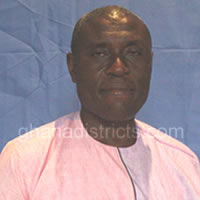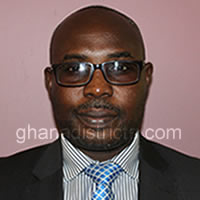The District Assembly recognizes the right of every child to education, as enshrined in the 1992 constitution. Consequently such policies and programmes as the Free Compulsory Universal Basic Education (FCUBE), the Capitation Grant, School Feeding Programme and recently the Free School Uniforms to needy school children have been introduced. These are to address a variety of challenges and inadequacies of the educational system. The priority intervention areas of the educational sector in the district are earmarked to address the challenges of education in the district. These include school enrolment, inadequate qualified teaching staff, poor infrastructure among others.
Schools Enrolment
The district has about 44,768 (as at 2009) pupils and students. The general increase in enrolment could be a response to the FCUBE Programme, capitation grant, school feeding programme, and free reading and learning materials. Reasons for the increase in enrolment of children of school going- age in 2005/2006 in schools could be based on these interventions. Enrolment at the basic level of education in all the seven (7) circuits of the district is quite impressive. From the statistics it could be observed that female enrolment is encouraging and this may be due to sensitization of parents on girl-child education and the MDGs which emphasize on gender parity in basic education as a right of children of school- going age.
Out of the 33,757 pupils at the basic level, female constitute 16,606 that is 49.2% to their male counterparts which also stands at 50.8% (17,151) closely nearing a gender parity at the basic level. It is significant to realise that female students outnumber the males at the SHS in both the public and private schools. With Gender Parity Indices (GPI) (measuring the relative access to education by both male and females at any level of education) of 0.96 and 0.92 in public and private basic schools respectively, it only indicates that the district is making progress regarding addressing the gender disparity in education both in public and private basic schools.
It is even better with a GPI of 1.10 in public school and 1.09 in private school at the SHS level.Information on enrolment is shown in the table in pdf file. From the table it could be seen that enrolment at the SHS level is very low. This can be interpreted as low interest of the people in the district in patronizing SHS education.The linkage between levels of the educational ladder also implies that there is a drastic difference between basic education and that of the SHS. Inferences are drawn from the fact that; low level of standard of living of the people, therefore not able to cater for their wards at higher levels of education.
Poor performance of pupils at the basic level and teenage pregnancy also account for this canker. In view of this, the focus should be towards sensitization of parents and children on the need to attaining a higher educational level. Also the District Assembly should endeavour to sponsor needy but brilliant children in schools in the district. With the high SPR at the SSS level, the existing infrastructure should be upgraded to attract more students. Efforts should also be made to improve the standard of academic performance at the JHS level to attract more indigenes to the SHS level.
School Infrastructure
Basic school infrastructure in the district is predominantly public. The provisions of these facilities have been supported by NGOs and the District Assembly, since 1995. Currently, the district has about 194 basic schools. Most of these schools are primary and closely matched with JSS. In spite of the seemingly good picture, the district continues to have a lot of dilapidated school buildings. According to available statistics on the educational infrastructure in the district, 33% of kindergarten classrooms are in good condition; whilst 4 have their classes under sheds and another 4 also have classes under trees.
About nineteen (19) of these classrooms are still in dilapidated conditions which forms about 14.2% of the total number of classrooms. Again, 7.85% primary school classes are being held under sheds whilst 19.9% of the classrooms are in bad conditions. If this situation is not addressed it could have a very negative effect on school enrolment and performance, as it directly affects the teaching and learning environments. The infrastructure at the JHS level is cropping up very steadily but is in serious dilapidated conditions which need immediate attention for rehabilitation.
There are 170 classrooms under this level of education, and out of this 61 classrooms are in dilapidated conditions, 2 classrooms under shed, non under trees but 107 classrooms in good conditions. As the saying goes “sound mind in a healthy body” the pupils need classrooms in good conditions for effective and productive learning to take place. Beside classrooms, the basic level of education lack facilities such as sickbay, workshops, changes rooms, science laboratories and computer laboratories. Some of the schools have few or none of these facilities, and these are represented in the tables below.
Staffing
The quality of the teaching staff significantly affects the quality and performance of school children at all levels of education. Available data shows that there are 1,804 teachers at the basic level of education. The table below shows staff and their level of qualification at the basic level of education.
The Table above suggests that out of the 1,804 teachers in the district 701 are trained, whilst the remaining 1,103 are untrained at the basic level of education. The untrained teachers constitutes the majority (61%) of the total teacher population. It is therefore very important that the district assembly takes the Teacher trainee sponsorship programme very seriously. In addition, the untrained teachers must be encouraged to access the Distance Education Programmes being undertaken in our Tertiary institutions.
Teachers Needed
In addressing the trained-teacher deficit of 408 in the public school system, the District Assembly, with collaboration from the GES needs to fashion out a more comprehensive plan of sponsorship for teacher trainees to attract more of them. Additional effort should be made to improve the conditions of school infrastructure in the district to attract more qualified teachers into the district. Moreover, improvement in the economic and social activities in the district as well as residential accommodation with other incentives for teachers will motivate teachers to accept postings to the district.
Date Created : 11/17/2017 5:21:22 AM





 facebook
facebook twitter
twitter Youtube
Youtube TOLL FREE 0800 430 430
TOLL FREE 0800 430 430 +233 593 831 280
+233 593 831 280 GPS: GE-231-4383
GPS: GE-231-4383 info@ghanadistricts.com
info@ghanadistricts.com Box GP1044, Accra, Ghana
Box GP1044, Accra, Ghana